Europe
In Ukraine’s northeast, fears rise of second Russian occupation
The Washington Post January 23, 2024
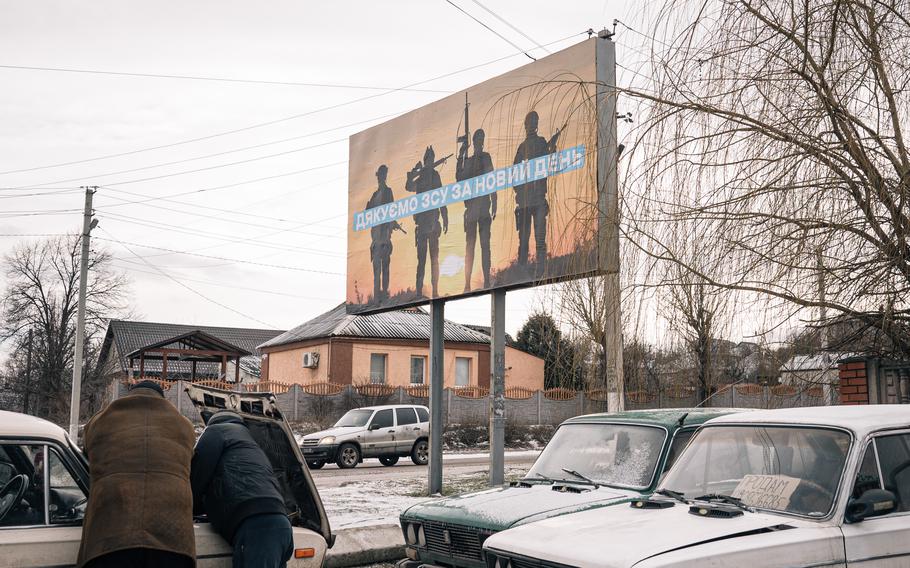
A billboard in Kupyansk, Ukraine reads “Thank you armed Armed Forces of Ukraine for a New Day.” The city, once occupied by Russian forces and later retaken by Ukrainians, has been under siege for months as Russia seeks to take it back. (Alice Martins for The Washington Post)
ON THE ROAD TO KUPYANSK, Ukraine — For nearly a year after Ukraine liberated towns along the war-scarred road to Kupyansk in the northeast Kharkiv region, residents hardly whispered fears of a second Russian occupation. They are now speaking them aloud.
For months, Russia has pummeled Kupyansk, a strategic rail hub that it seized in early 2022 and that Ukraine retook seven months later. From positions east of the Oskil River, which bisects the city, Russia never fully lost sight of its target.
In recent months, Ukraine has urged civilians to evacuate — again — and not just from Kupyansk but also from dozens of villages to the west, a grim sign that Kyiv fears the Russians could push forward. On Saturday, they took control of the small settlement of Krokhmalne, southeast of the city, bringing them slightly closer to the river.
Although Kyiv has tried to minimize the importance of the loss, saying the village was home to only about five households before the war, the development and evacuation orders have spurred fears that Ukrainian troops are preparing to surrender even more ground.
“It’s very scary,” said Diana Shapovalova, 34, one of the last remaining gynecologists working in the area. “We are ready to evacuate. We have all our stuff packed. Our kids know they need to be ready.”
“We live in a dangerous place,” she added.
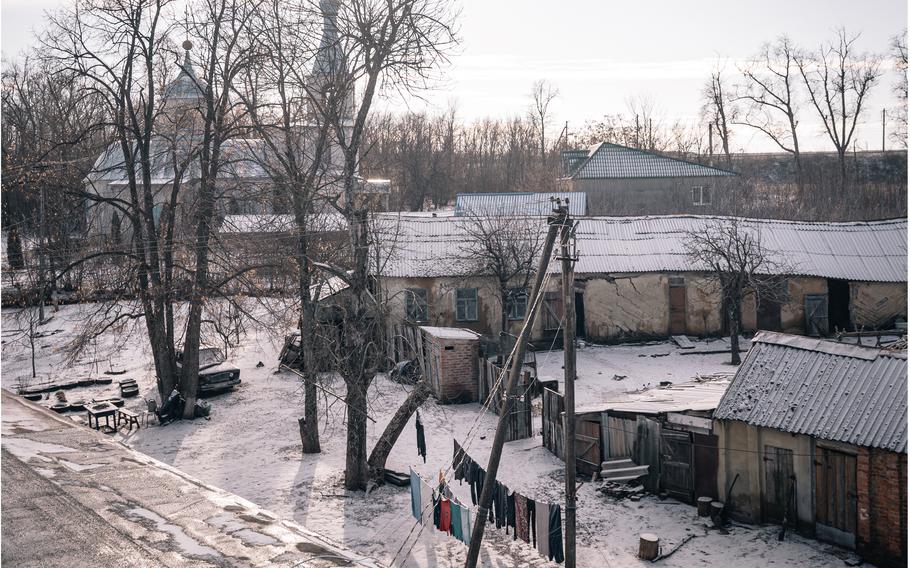
A view of the village of Starovirivka, in the Kharkiv region, which has not yet been evacuated. (Alice Martins for The Washington Post)
The river that cuts through Kupyansk could serve as a natural defense in case of further Russian advances. But Russia has captured the city before, and a recent assessment by the Institute for the Study of War, a Washington-based think tank, determined that Moscow has sent soldiers to the area who appear to be “less degraded” than those posted elsewhere. Ukraine, in turn, is beefing up its defenses.
Ukraine’s surprise counterattack in this region stunned the world in the fall of 2022, as Russian forces fled en masse from towns they had occupied for months with little fight. Kyiv had hoped for similar wins when it launched another counteroffensive last summer, focusing largely in the south. But the effort failed, leaving the Russians in control of roughly one-fifth of Ukraine’s sovereign territory, and now it is the Russians who appear to be on the offensive as aid for Ukraine stalls in Washington and Brussels.
Shapovalova is based in the small town of Shevchenkove, but with no gynecologists left in Kupyansk, her patients often travel long and dangerous routes from east of the river to see her. She also treats trauma victims and wounded soldiers before they are sent to larger hospitals.
Civilians moving away from the front are required to stop in Shevchenkove to be interviewed by police and intelligence officers, who check their phones and investigate any potential ties to Russian troops. Despite the evacuation orders, fewer than a dozen people — mostly the elderly — pass through each day, said a police officer in the town, who spoke on the condition of anonymity because his family is living under Russian occupation.
In the past month, he said, there has been an increase in artillery, aviation bombs and guided missiles in and around Kupyansk. “There wasn’t a day when nothing hit the area,” he said. “There are a lot of injured, and a lot of dead soldiers and civilians.”
Kharkiv, the nearest major city and an initial destination for many evacuees from Kupyansk, is also not safe. Two fierce barrages of Russian missiles, fired overnight Monday, killed at least eight people in Kharkiv and injured dozens of others, local authorities said. The strikes also damaged about 100 apartment buildings in the city and a major gas pipeline.
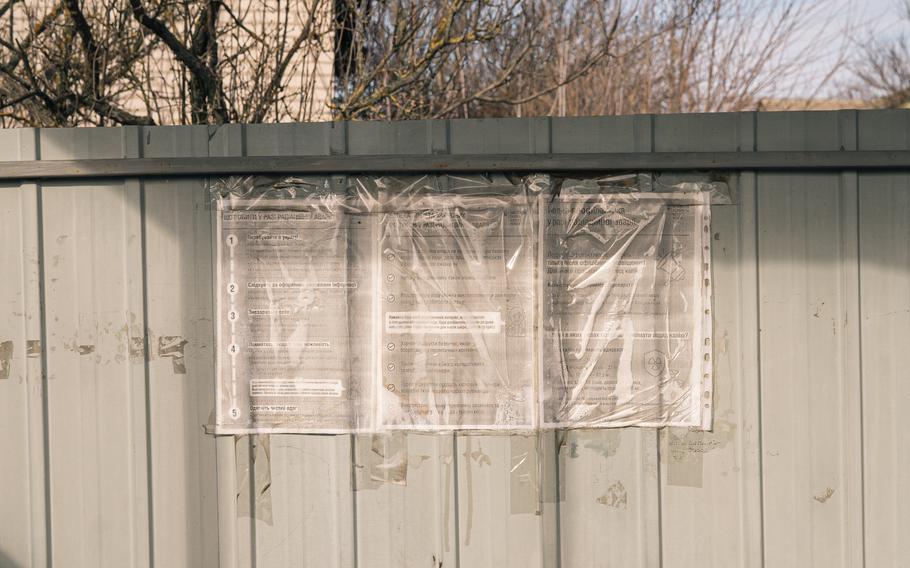
Signs at a bus stop in the Kharkiv region provide instructions on how to proceed in the event of a nuclear attack. (Alice Martins for The Washington Post)
Strikes launched toward Kyiv, the capital, which has stronger air defense capabilities, wounded 22 people. In another strike, one person died in the southeastern city of Pavlohrad.
Svitlana Perepadia, 54, director of the hospital where Shapovalova works, said she is also “very afraid” Russia could reoccupy the area. But their patients, she said, often refuse to flee “until they have a situation where a shell lands in their neighbor’s home or their garden.”
Such is the case for Nastya Pryimenko, who received the evacuation notice for her village, Hrushivka, on Jan. 16 as she began the 15th week of pregnancy. The village is already in range of some Russian artillery systems and has been hit before.
But to even consider leaving home, she said, “it would probably take the Russians moving very close to the village or something landing near my house.”
For now, they are still 15 miles away. Although many locals already left the village, enough still feels safe and normal for Pryimenko. One local woman is even still offering manicures.
Pryimenko, 24, knows the horrors of occupation firsthand. Her family buried her father’s military documents near the lake in town, fearing Russian troops might find them and retaliate. Her neighbor’s home was looted. She fled in July 2022, afraid Russian soldiers might rape her. She did not return until a week after liberation, when a Russian attack from across the river killed her maternal grandmother.
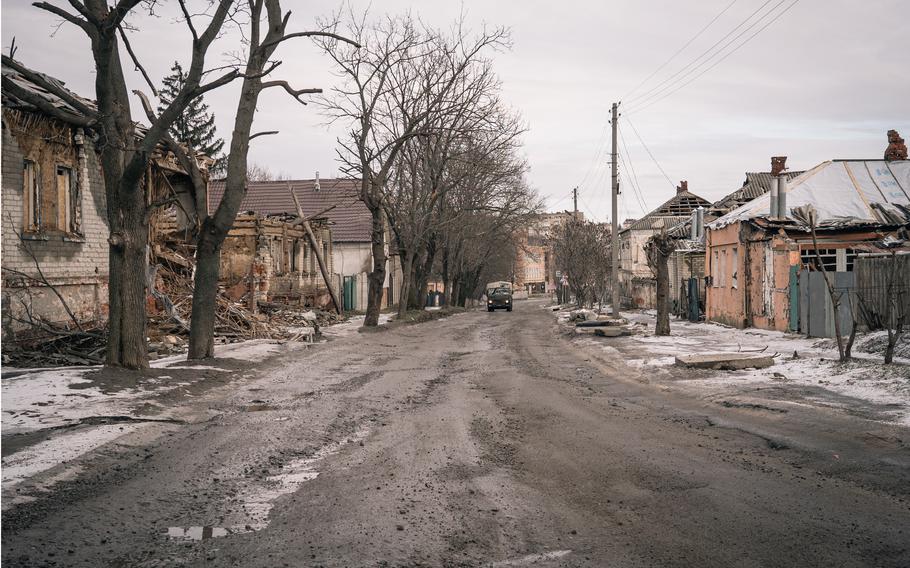
The scene on a street in Kupyansk. (Alice Martins for The Washington Post)
It was on the trip home to bury her that she met a charming, redheaded dance-instructor-turned-soldier named Roman, who had helped free Hrushivka from Russian control. They married in March and he is now serving in the Donetsk region, in the same brigade as her father, while she stays home with her paternal grandparents.
Pryimenko said she doubts that Ukrainian forces would ever cede Kupyansk. Having relatives in the military has also reinforced her family’s conviction that they do not need to evacuate.
“In case something happens, they’ll tell us: ‘Leave,’” said her grandmother, Nadiia Svichkar, 63.
The baby is due in July. “We hope by then, all of this will even end,” Pryimenko said. “I don’t want my kid to know war.”
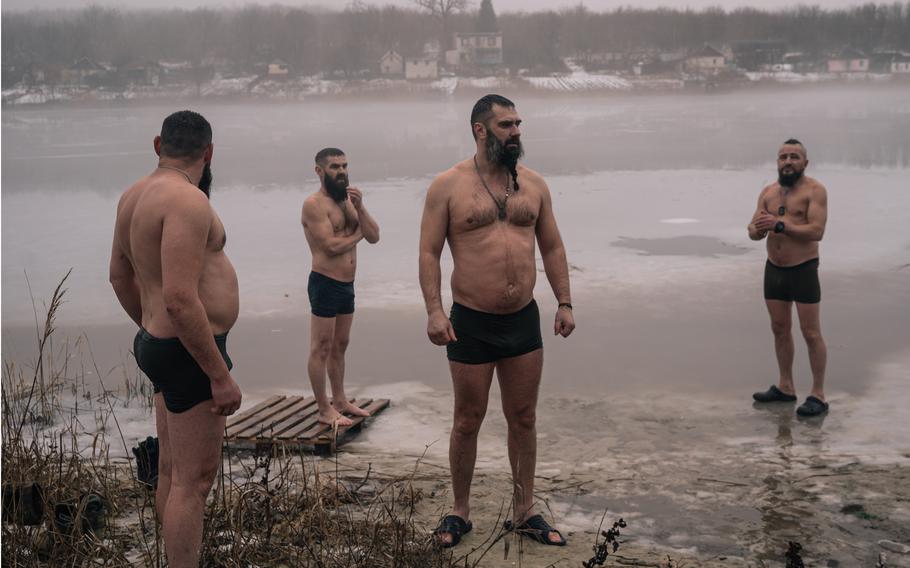
Soldiers fighting in Kupyansk celebrate the Feast of the Epiphany last week with a swim in a frozen lake. (Alice Martins for The Washington Post)
Just down the road, others are skeptical.
“I’m more scared of the second occupation than any direct shelling,” said Claudia, 75, who spoke on the condition that her last name not be used in case the Russians return. “We didn’t believe it would come to this. We are scared for other people and we are scared for ourselves.”
Claudia lives in the village of Starovirivka, which neighbors Hrushivka but is in a different district that is not yet being evacuated. Still, the sound of outgoing artillery sounds regularly in the background, and she is preparing for the worst. On Sunday morning, after a night of heavy shelling across the river, her neighbor, Svitlana, 55, opened her phone and read out loud that Russia had taken Krokhmalne.
“We need more weapons,” Claudia said, choking back tears. “We need them immediately.”
Farther toward Kupyansk, in the village of Nechvolodivka, where a local man was killed in a Jan. 7 attack, Ivan Baydak, 74, said he presumed the order was issued because “the line might move.”
Baydak trusts the Ukrainian military, but whether forces can hold the front is a “tougher question.”
“We don’t have equipment,” he said. “We lack manpower.”
Iryna Kurylova, 31, who is now eight months pregnant, waited until the last minute to evacuate from the east side of the river. She also had not seen a doctor until she was five months pregnant, avoiding the dangerous cross-river trek to Shevchenkove.
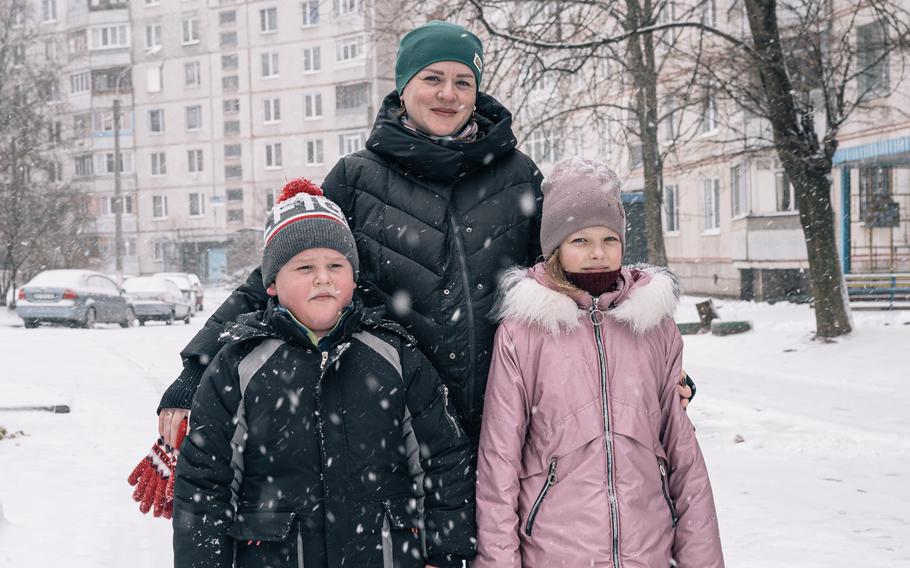
Iryna Kurylova, who is now eight months pregnant, evacuated from her village on the east side of the Oskil River. She and her family are currently living in Kharkiv. (Alice Martins for The Washington Post)
At Shapovalova’s urging, she finally left for the city of Kharkiv in December amid fears she might otherwise lose custody of her two older children, ages 9 and 7.
“If I weren’t pregnant, I wouldn’t have left,” she said. Her family has grown accustomed to shelling, and she thinks civilians are being evacuated merely to prevent Russian sympathizers among them from sharing information about Ukrainian troop movements.
Shapovalova convinced another patient, Iryna Kasyanova, 32, to evacuate from the other side of the river just weeks before her baby was born in September.
Before that, the mother avoided driving through Kupyansk on her way to appointments, fearing she could be killed. She is now staying with her family and pets in a house in Shevchenkove that belongs to Shapovalova’s family. In her home village, only 20 people are left out of the 3,000 who once lived there.
Shapovalova worries though that soon even Shevchenkove won’t feel far enough from the front for safety. The doctor already fled Russian occupation with her family in June 2022, moving to Ohio, where she worked as a cleaner. When she returned to her home and career, she thought their ordeal was over. Now, she’s not sure.
“We still believe in the army,” she said. “But blindly believing is not enough when we hear the whistles of shells and explosions.”
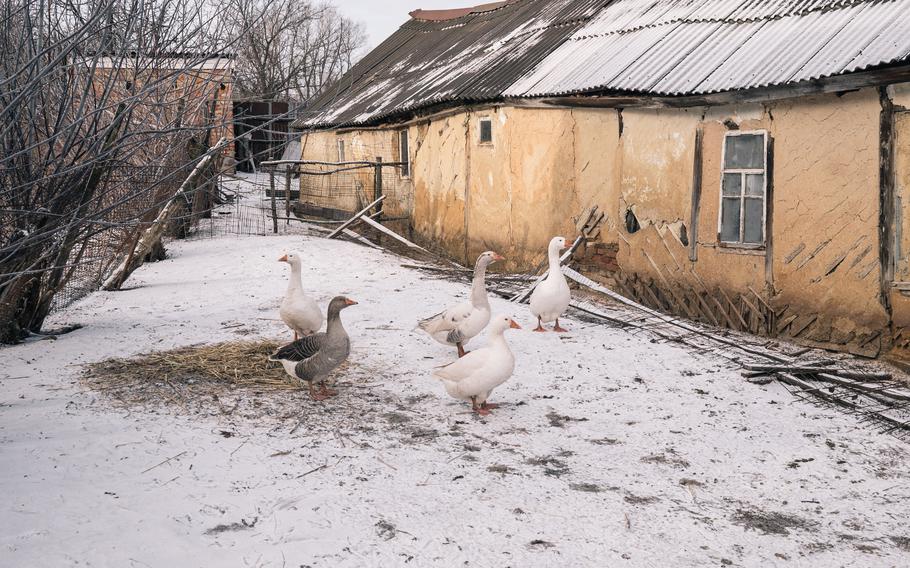
Geese are seen in a backyard in the village of Starovirivka. Residents say they fear a second occupation. (Alice Martins for The Washington Post)